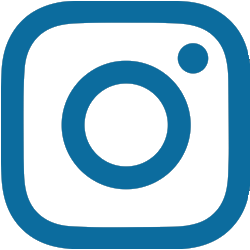Debt is something that many Canadians are battling, especially right now thanks to COVID-19. According to the Toronto Sun, 62% of moderate-income households are struggling financially and half of the country’s low-income households are putting 31% of their income towards paying off debt.
Numbers like these are frightening. After all, we know that debt can have a number of negative side effects including an impact on mental health. However, while it may take some time, you absolutely can work to getting yourself out of debt. Here are five tips to help you with your debt-free journey.
1. Reevaluate your budget
Anyone trying to save money (to pay off debt or otherwise) should have a budget. A budget can be a huge help in determining where your money is going. If you don’t have a budget yet, creating one is your first step. Need help? There are plenty of budgeting apps available for iOS and Android that will help make creating a budget easy! Try Mylo or Mint.
Once you have your budget in place, you need to slash it. Cut out everything you don’t need. If you are going to be serious about paying off your debt as soon as possible, you need to really analyze how you allocate your money. I’m not saying you need to get rid of everything but the absolute essentials, but it’s time to get picky. You don’t need Netflix, cable, and Amazon Prime. Pick one.
Once you have cut out down on the extras, go back and look at the essential categories. How can you minimize these? Is there somewhere cheaper to shop for groceries? Can you downgrade service plans? Is it worth switching providers for a cheaper rate?
Remember, when it comes to paying off your debt, every dollar counts.
2. Consider a low interest credit card
If you have a lot of credit card debt, then it might be time to look at getting a low interest credit card that allows you to balance transfer.
Unlike typical credit cards which have interest rates of 20% (or higher), low interest cards are known for their low rates which makes it easier to pay back your credit card debt. While rates will vary depending on the card you choose, many low interest credit cards allow you to balance transfer any outstanding amounts you have on other cards. This is advantageous since you’ll get a lower interest rate for a period of time.
I know the idea of applying for another credit card while struggling with debt seems backwards, but if you can transfer your credit card debt to a card with a much lower interest rate, then you will be working towards saving yourself money in the long run.
3. Consider picking up more work or starting a side hustle
You need money to pay off your debt so one obvious answer is to make more money. Obviously, this is easier said than done. But if you can make the time, it’s worth inquiring at your job to see if you can pick up some overtime. If that doesn’t work, think about things you may be able to do on your own from out of your house. Obviously, this isn’t the time to invest in a lot of equipment for a startup. However, if you are a skilled photographer and have a camera maybe you can offer to take portraits or photos for people. Do you have a car? Look into working as an Uber driver or for a food delivery service. There are also several sites like Upwork and Fiverr that are full of ads looking for people with different skillsets and experience to help with various projects.
4. Choose a debt strategy: snowball or avalanche
Paying off your debt will likely be a rocky road with several bumps along the way. But if you choose and stick to one strategy, it will help keep the end in sight.
There are two main strategies when it comes to paying off your debt. The snowball approach and the avalanche approach.
In the snowball approach, you will start with your smallest debts and move up to your bigger one. The idea is that by being able to pay things off quickly with the small debts, you will be encouraged and continue working towards your goal of being debt-free.
In the avalanche approach, you do the reverse. You start with your highest interest debt and work your way down. This way you’re paying the least amount of interest. It will take longer to feel the gratification that you will get by using the snowball approach, however, the avalanche approach will allow you to save more.
There is no right or wrong choice, just choose one and stick to it. Keep in mind, it’s important to make sure that you are paying the minimum payments on all debts as you go, so you don’t miss any payments. Just use anything extra and put it towards paying off the debt you are choosing to tackle first.
5. Apply for a consolidation loan
If things are getting out of control and you are struggling to keep track, then look into a consolidation loan. Consolidation loans typically come from a financial institution that will provide you with a loan at a lower interest rate. You then take that loan, pay off all your existing debts with it, and then you are left with just that one loan to pay off.
Some people find these types of loans to be incredibly helpful and make tackling their debt easier and more manageable. However, you do need to be very responsible as you’ll have access to additional funds. It’s up to you to use it to pay off the existing debts, not rack up more.
Navigating your way out of debt can, at times, seem impossible. However, with some smart lifestyle changes and a plan, you can get there.






